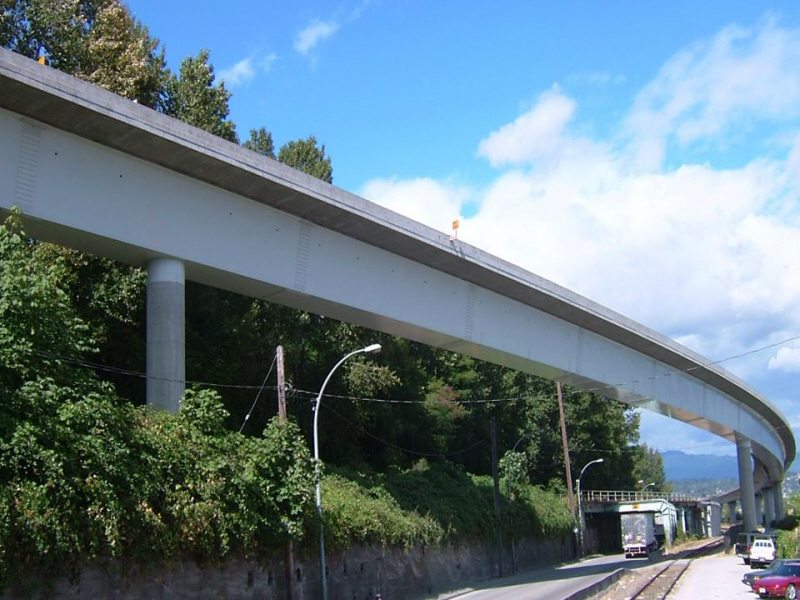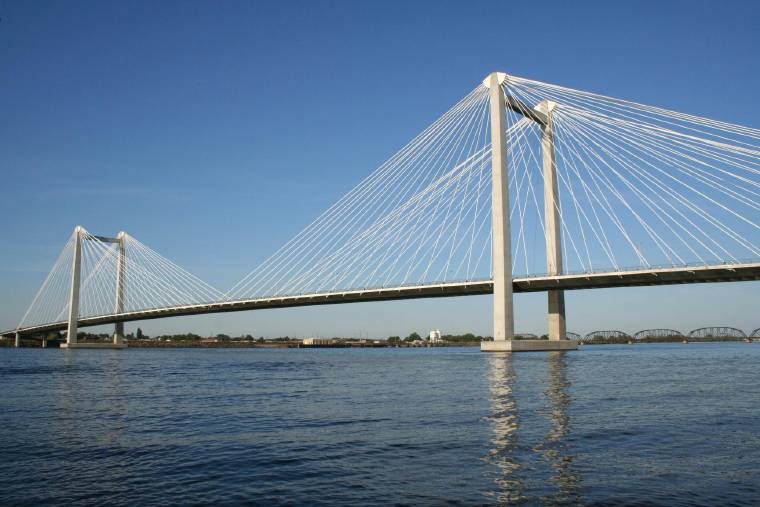Development of Bridge Aesthetics in Engineering and Architecture
| ✅ Paper Type: Free Essay | ✅ Subject: Architecture |
| ✅ Wordcount: 1405 words | ✅ Published: 18 May 2020 |
Bridge Aesthetics: Abstract
This paper will examine bridge design as it relates to being visually suitable, or aesthetically pleasing to their settings. The background issue which is addressed in this paper relates to the current realities with regard to bridge aesthetics, engineering and architecture, and the changing balance of these three elements of bridge design and construction projects. There are basic principles that should be observed in the conception of a bridge design. The most important principle is that the bridge should have a clean and well-defined fundamental construction that does not include unnecessary detail and that is pleasing to the eye and reactive to the senses. The engineer should consider the relationship between the bridge and the surrounding environment. ” Most bridges are designed and decorated to harmonise with and compliment their environment.” [1][Tang (1991), 167, People’s Republic of China]
“We must respect the natural balance and form of our structures in a manner that leads to the least possible disturbance of the landscape. This is especially important if bridges are built near outstanding natural scenery.”[2] [von Olnhausen (1991),197, Sweden]
Bridges have always been fascinating to people, weather it is a old style bridge that simply goes over a stream or one of the impressively beautiful modern bridges whose massive spans seem to defy gravity. A variety of qualities are necessary to build a modern bridge; a lot of knowledge, the courage to make bold decisions and the ability to lead a team of workers to successful completion of the project. Building bridges is a difficult task that both attracts and challenges the energetic and confident engineer. Building bridges is important but not only that, the building of bridges gives satisfaction when it is successfully completed. “Building bridges is a passion that never looses its freshness and stimulus throughout a man’s life.”[3] [Bridge Aesthetics and Design, Leonhardt, (1984)]
“Mankind has a deeply engrained sensitivity to beauty and can be harmfully affected by ugliness. “[4] [Bridge Aesthetics and Design, Leonhardt, (1984)] Human happiness and a joyful existence is in part affected by the aesthetic quality of the environment we inhabit. The numerous amounts of bridges that were constructed over the past hundred years for the purpose of mobility play apart in this environment. Many of these bridges are beautiful, and some are ugly while some make no impression or are consealed by other structures. Beautiful surroundings create feelings of satisfaction in most people, but an ugly, dirty environment creates discomfort.
“The most important principle in bridge architecture is to achieve a clean and well-defined anatomical construction, devoid of deception and unnecessary detail, and with a directness of line both pleasing to the eye and responsive to the senses….”[5] [Ghaswala (1991),195, India]
Buildings or structures like bridges are created for a purpose, and this is the first consideration when designing. Secondly, the structure should delcare itself in a true, clean form that creates a feeling of stability. An important consideration in bridge design is harmonious proportions in three dimensions. Good proportions should exist between masses and voids, closed surfaces and openings, and between light and dark caused by the sun or shadows. The proportions should relay a message of balance. Another good rule to follow is that of order. The principle of order in the lines and edges of a building should limit the directions of these lines and edges to only a few in space. Order should be considered for proportions of the bridge. For example, rectangles of 0.8:1 should not be put next to slim rectangles of 1:3. Symmetry is of the utmost importance. It is also favorable to include repetition of equal elements under the principle of order. “Repetition provides rhythm which creates satisfaction”.[6] [Bridge Aesthetics and Design, Leonhardt, (1984)]
There are many factors that should be considered when designing a bridge, functionality is of primary importance. There are several structural types available: beam, arch, suspended structures etc. which can be built of timber, stone, steel or concrete. Arch bridges are a strong embodiment of a bridge as its shape conveys its ability to carry loads across a river. To obtain the impression of stability it is essential that the piers between the arches are thick enough and not too high in relation to the width and depth of the spans.

Figure 1 Arch Bridge from: https://paginas.fe.up.pt/~arch19/?page_id=73
Beam bridges are one of the oldest types of bridge structures. Beam bridges can reach spans of more than 200m. With such a large span, it is difficult to shape the beam bridge pleasingly because the dimensions increase with the span, making compatibility of the masses of the structure with the environment fundamental. The most important part of the appearance of the bridge is the slenderness of the beam, which is span length divided by beam depth. Depending on its slenderness, a beam bridge can be heavy and depressing or light and elegant. Scale and proportion are important aspects to consider.

Figure 2 Beam Bridge from https://www.bristol.ac.uk/civilengineering/bridges/Pages/HowtoreadabridgeBeams.html
Cable-stayed bridges can have many different arrangements of the cables creating a beautiful display. The most natural arrangement is the “fan shape” with all cables starting at the top of the tower. The towers can have a very slender design because the cables exert only a small wind force and they contribute to the safety against buckling. These bridges are aesthetically pleasing, incredibly strong, and exceptionally durable. Many of the first designs that were built in the late 19th century are still standing today, with most still used for their initial purpose. Computer-aided designs are now letting architects and engineers maximise the potential of this option.

Figure 3 Cable Stayed Bridge from: http://zacsawesomebridgebuildblog.blogspot.com/2013/03/design-and-construction.html
Suspension bridges much like the arch is a very visually appealing structure. This is because it conveys a stable appearance because it is easy to visualise that the cables supported by pylons and anchored at the ends, can support the weight. The suspension bridge with a thin deck strip is more charming than the cable-stayed bridge. Cable-stayed bridges are however more economical and stiffer. Tourists, local and foreign in America love to cross the Brooklyn Bridge and visit the Golden Gate Bridge in San Francisco. Compared to truss and beam bridges, suspension bridges are more aesthetically pleasing because of the different shapes of these bridges. The curved and linear features of these bridges make them structurally beautiful. This is on top of the cables giving support to these bridges, making them versatile bridges.

Figure 4 Suspension Bridge from: https://www.wonderopolis.org/wonder/how-does-a-suspension-bridge-work
Using the principle or order is best demonstrated on the appearance of the truss bridge. The truss bars should only space in a few different directions in space. This gives a uniform appearance from all viewing directions. Trusses with parallel chords are to be preferred for bridges, and the chords should also be parallel to the roadway. The most difficult aesthetic problem of such bridges is to secure the top chords against wind and transverse buckling.


Figure 5 Truss Bridge from: https://espliego.wordpress.com/2008/06/24/famous-bridge-designs/
In conclusion, if we consider the development of bridge design from an aesthetical point of view, or the development of taste concerning beauty of bridges, we find a preference for very slender structures supported by slender piers or columns. We prefer simplicity and restriction to a minimum of elements. We avoid heavy, clumsy structures with large abutments. With many places leading the way to improve the visual impact of infrastructure, there is an overall appreciation for good aesthetics and their influence on society. Engineering is the profession in our society given responsibility for designing bridges. Engineers are used to dealing with issues of performance, efficiency, and cost but they also must be prepared to deal with the issues of appearance as well: symbolism, appropriateness to the site, and beauty.
References
- Leonhardt, F. (1984), “Bridge Aesthetics and Design”, MIT Press, Germany
- Ghaswala, S. K. (1991). “Bridge aesthetics in India.” Bridge aesthetics around the world, M. P. Burke Jr. et aI., eds., Transp. Res. Board, Nat. Res. Council, Washington, D.C.
- von Olnhausen, W. (1991). “Bridges in Sweden: Should we do more about aesthetics? “Bridge aesthetics around the world, M. P. Burke Jr.et aI., eds., Transp. Res. Board, Nat. Res. Council, Washington, D.C.
- Tang, H. C. (1991). “Philosophical basis for Chinese bridge aesthetics. “Bridge aesthetics around the world, M. P. Burke Jr. et aI., eds., Transp. Res. Board, Nat. Res. Council, Washington, D.C.
Cite This Work
To export a reference to this article please select a referencing stye below:
Related Services
View allDMCA / Removal Request
If you are the original writer of this essay and no longer wish to have your work published on UKEssays.com then please click the following link to email our support team:
Request essay removal


